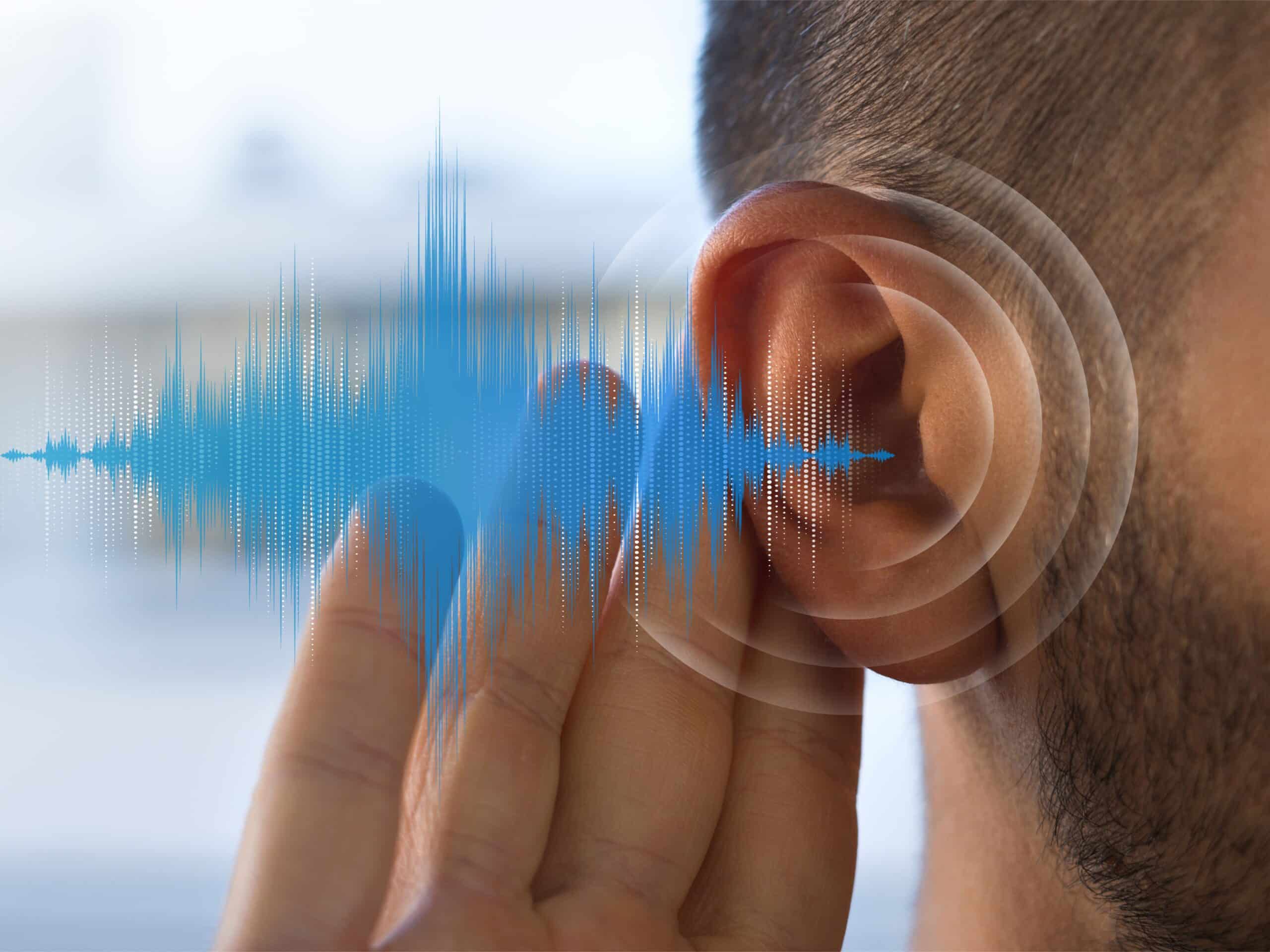Table of Contents
Have you ever wondered what frequencies you can hear? Or perhaps you’ve tried to test your hearing online but weren’t sure how accurate it was. Understanding your hearing frequency range is more important than you may think. It’s not just about volume, it’s about pitch, clarity, and the ability to enjoy the world around you. Whether you’re a musician, audio engineer, or someone who simply wants to protect their hearing, a hearing frequency test can offer valuable insights.
In this article, we’ll explore everything you need to know about hearing frequency testing—from what it is, how to do it, and how to interpret the results, to online options, common tones used in testing, and what to do if you suspect hearing loss.
What Is a Hearing Frequency Test?
A hearing frequency test is a diagnostic tool used to determine how well you can hear sounds at various frequencies. Human hearing is measured in Hertz (Hz), which refers to the pitch of a sound. A frequency test evaluates how well you can detect tones ranging from low bass sounds (like a distant thunder rumble at 20 Hz) to high-pitched sounds (like a whistle at 20,000 Hz).
Most adults can hear between 20 Hz and 20,000 Hz, although this range tends to shrink with age or due to noise damage. The hearing frequency test plays a key role in identifying hearing loss and understanding which frequencies you may struggle to detect.
Explore pure-tone audiometry, one of the most common methods used in clinical frequency tests at The Hearing Centre Singapore.
Why Frequency Matters in Hearing
Different sounds and speech elements occur at different frequencies:
- Low frequencies (20–500 Hz): Often carry background noise and vowel sounds in speech.
- Mid frequencies (500–2000 Hz): Critical for understanding most speech.
- High frequencies (2000–8000 Hz and above): Essential for hearing consonants like “s,” “f,” and “th,” which affect speech clarity.
If you have difficulty hearing high-frequency sounds, conversations may sound muffled, even if you can hear voices.
Who Should Take a Hearing Frequency Test?
You should consider taking a hearing frequency test if you:
- Frequently ask people to repeat themselves
- Struggle to hear conversations in noisy environments.
- Notice that certain sounds seem dull or missing.
- Work in noisy environments or wear headphones often
- Are over 40 and haven’t had your hearing checked in a while
- Want to test your hearing online for quick feedback?
How Does a Hearing Frequency Test Work?
A hearing frequency test typically uses hearing test tones at various pitches and volumes to check how well each ear detects them. The most common format is a pure-tone audiometry test, where you respond when you hear beeps through headphones.
Here’s what you can expect:
- Setup – The test is performed in a quiet room or soundproof booth.
- Tone Presentation – A series of tones from 250 Hz to 8000 Hz are played.
- Response – You indicate (usually by pressing a button) when you hear a tone.
- Results – Your responses are plotted on an audiogram, showing your hearing threshold for each frequency.
Other tests, like ABR/ASSR or tympanometry, may also be used for more detailed results.
Can You Test Your Hearing Online?
Yes, you can test your hearing online using free or paid digital tools. These websites or mobile apps simulate a hearing frequency test by playing tones across the frequency spectrum and recording your response. However, online tests should not replace a clinical hearing evaluation.
Pros of online hearing tests:
- Convenient and fast
- Can give a general sense of hearing health
- Useful for early detection
Cons:
- Not as accurate due to an uncontrolled environment
- Results can vary based on headphone quality and background noise.
- May not detect complex hearing issues
If an online test shows abnormal results, follow up with a professional hearing test in Singapore for a complete evaluation.
What Frequencies Can I Hear?
The range of human hearing typically spans:
- 20 Hz to 20,000 Hz – the full range in youth
- 20 Hz to 16,000 Hz – common in adults under 40
- 20 Hz to 12,000 Hz or less – for adults over 60
If you’re wondering, “What frequencies can I hear?” you can check by listening to test tones at various frequencies. These tones are usually available online and can help identify which frequency ranges you may be missing.
Here’s a general guide:
Frequency (Hz) | Sound Example | Detectable? |
125 | Low rumble, thunder | Yes |
500 | Deep male voice | Yes |
1000 | Normal conversation | Yes |
4000 | Bird chirps, “s” or “f” sounds | Varies with age |
8000–16,000 | High-pitched tones | Often lost with age |
18,000–20,000 | Mosquito ringtone | Rarely heard over 25 |
Hearing Test Tones Explained
Hearing test tones are pure, single-frequency beeps used to evaluate hearing sensitivity. Each tone is calibrated to a specific decibel level (dB), which measures loudness. Lower dB levels test how quiet a sound you can hear.
Typical frequencies tested in clinics include:
- 250 Hz
- 500 Hz
- 1000 Hz
- 2000 Hz
- 4000 Hz
- 8000 Hz
Some extended tests may include frequencies up to 16,000 or 20,000 Hz.
These tones help audiologists understand if your hearing loss is mild, moderate, severe, or profound—and whether it’s more pronounced at certain frequencies.
Signs of High-Frequency Hearing Loss
High-frequency hearing loss is one of the most common types, especially from age or noise exposure. Signs include:
- Trouble hearing birds chirping or leaves rustling
- Difficulty understanding speech in noisy places
- Missing parts of words or high-pitched voices
- Needing to increase the TV volume
- Complaining that others mumble
A hearing frequency test can detect high-frequency loss early and help guide treatment options.
Tips for Getting the Most Out of a Hearing Frequency Test
To ensure accurate results, keep these tips in mind:
- Use good-quality over-ear headphones
- Take the test in a quiet room.
- Avoid testing when you have a cold or an ear infection.
- Calibrate your system if prompted.
- Avoid background distractions or multitasking.
If you’re using an online tool, try to find one that allows calibration and provides frequency-specific results.
Online Tools to Test Your Hearing
Here are some popular platforms where you can test your hearing online using hearing test tones:
- Phonak Online Hearing Test – Offers tones and speech-based checks.
- ReSound Online Hearing Check – Covers a broad frequency range.
- Hearing Test Apps (iOS & Android) – Like Mimi Hearing Test, Hearing Test by e-audiologia.
While these tools are useful for screening, always follow up with a certified audiologist if you notice a decline.
Hearing Tests in Singapore
If you’re in Singapore and want an accurate, professional assessment, consider visiting The Hearing Centre. They offer:
- Comprehensive frequency and speech testing
- Pure Tone Audiometry
- ABR/ASSR tests
- Tympanometry
- Hearing aid fittings and cochlear implant services
Whether you’re concerned about age-related hearing decline or noise damage, The Hearing Centre provides the right support.
What to Do If You Have Frequency-Specific Hearing Loss
If your hearing frequency test shows you’re missing certain frequencies:
- Visit an Audiologist – Book a full diagnostic test at a hearing clinic.
- Consider Hearing Aids – Modern hearing aids can amplify specific frequencies you struggle to hear.
- Use Assistive Listening Devices – For watching TV or in crowded places.
- Protect Your Ears – Use earplugs in loud environments to avoid further damage.
- Re-test Regularly – Monitor your hearing annually or as advised.
Hearing Frequency Tests for Children and Musicians
- Children – Early hearing screening is vital for language development. Tests are tailored for different age groups.
- Musicians and Audiophiles – Frequency-specific testing helps in tuning instruments or setting up sound systems. Custom in-ear monitors and protective gear can be prescribed.
Frequency Loss and Hearing Aids
Hearing aids today are designed with frequency-specific processing. They can:
- Amplify high frequencies for speech clarity
- Suppress background noise
- Customize sound profiles based on your audiogram.
Brands like Phonak, Signia, ReSound, and Starkey offer advanced models designed to compensate for frequency loss.
Conclusion
A hearing frequency test is more than a technical check, it’s a window into your auditory health. Whether you’re just curious about what frequencies you can hear or seriously suspect a problem, knowing your hearing profile is the first step toward better communication and quality of life.
With online tools, hearing test tones, and access to professional care, there’s no reason to delay. If you’re ready to test your hearing online, do so today, but don’t stop there. Schedule a full hearing evaluation for precise, personalized results that help you hear better for life.
Frequently Asked Questions
They offer a general idea but are not as accurate as clinical tests due to variables like headphone quality and background noise.
Most people under 25 can, but high-frequency hearing tends to decline with age. If you can’t hear it, don’t worry’s normal.
They measure your ability to detect sounds at different pitches and help diagnose hearing loss patterns.
Yes, it’s a natural part of ageing called presbycusis, affecting many people over 50.
Visit The Hearing Centre for expert evaluations and treatment options tailored to your needs.
It checks how well you can hear sounds at different pitches, from low bass to high treble tones.
Yes, many online tools let you check your hearing using test tones, but results are general and not as precise as a clinic test.
It may signal high-frequency hearing loss, common with age or noise exposure. Speech may sound muffled or unclear.
No, they are pure tones at specific frequencies used to detect hearing sensitivity more accurately.
It’s recommended to test your hearing once a year, especially if you’re over 40, work in noisy environments, or notice changes in how you hear sounds.

Evlin is passionate about helping people with hearing loss. With years of experience in audiology, she has diagnosed and treated a wide range of hearing conditions across all age groups. She is accredited to conduct comprehensive hearing assessments and provide treatments for patients from newborns to the elderly. Committed to personalized care, she strives to empower patients to fully engage in life with better hearing.
Designation: Clinical Audiologist
Qualification: Bachelor of Health Science (Honours) (Audiology), University of Science Malaysia
Membership: .Society of Audiology Professionals in Singapore (SAPS)

